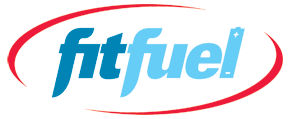By Will Brink
One of the greatest long-term threats to our ability to remain healthy and function independently with advancing age is a steady loss of lean muscle mass, a condition known as sarcopenia.
While doctors have long warned about the loss of bone mass (osteoporosis) that accompanies aging, scant attention has been paid to the equally  debilitating loss of muscle mass commonly seen in older people.
debilitating loss of muscle mass commonly seen in older people.
Today, however, sarcopenia is increasingly recognized as a serious health problem that afflicts millions of aging adults and places an ever-greater strain on our health care system.1 Age-related loss of muscle mass and strength not only robs elderly people of the ability to perform even the most basic tasks of daily living, but also vastly heightens their risk of suffering devastating injuries and even death from sudden falls and other accidents. The good news is, all health-conscious adults can take immediate steps to implement a program that will greatly lessen their risk for sarcopenia.
Understanding Sarcopenia
Sarcopenia is the age-related loss of muscle mass, strength, and functionality. It generally appears after the age of 40 and accelerates after the age of approximately 75. Although most often seen in physically inactive people, sarcopenia is also common in those who remain physically active throughout their lives. Therefore, while engaging in regular physical activity is essential to avoiding sarcopenia, inactivity is not the only contributing factor to this condition. Like osteoporosis, sarcopenia is a multifactorial disease process that may result from sub-optimal hormone levels, inadequate dietary protein, other nutritional imbalances, lack of exercise, oxidative stress, and inflammation.
Protein and Other Dietary Factors
Major dietary factors that contribute to sarcopenia are inadequate protein intake, insufficient calorie intake, and chronic, low-level metabolic acidosis (or an abnormally increased acidity in the body’s fluids). Although it is generally believed that the average American consumes more protein than needed, inadequate protein in the diets of older adults is common. Further compounding this problem may be a diminished capacity to digest and absorb protein in the elderly. Several studies suggest that protein requirements for older adults are higher than for younger people, and should be higher than is often recommended.5-7 In short, many older adults may not consume enough high-quality protein to support and preserve their lean body mass.
Older adults should strive to ensure an adequate intake of high-quality protein from a variety of sources, accompanied by an increase in fruits and vegetables, and a reduced intake of cereal grain foods.
Importance of Optimal Hormone Levels
Aging is accompanied by declining levels of many essential hormones in the body, particularly tissue-building (anabolic) hormones such as growth hormone, DHEA (dehydroepiandrosterone), and testosterone.
For example, circulating growth hormone levels in older adults are just one third of those in teenagers. Researchers have recently focused on insulin-like growth factor 1 (IGF-1) and mechano growth factor as critical hormones in maintaining muscle and bone mass. Without adequate levels of these hormones, it may be impossible for anyone to maintain lean body mass, regardless of how they eat or exercise.
Testosterone is also critical to maintaining lean body mass. Especially when given to testosterone-deficient men, this essential hormone can have a broad range of positive effects. One study noted that in healthy older men with low-normal to mildly decreased testosterone levels, testosterone supplementation increased lean body mass and decreased fat mass. Additionally, testosterone improved upper and lower body strength, functional performance, sexual function, and mood in some individuals. Although women produce less of this hormone than men do, adequate testosterone is just as essential to their health and well-being.
Read more here
#standagainstweakness
